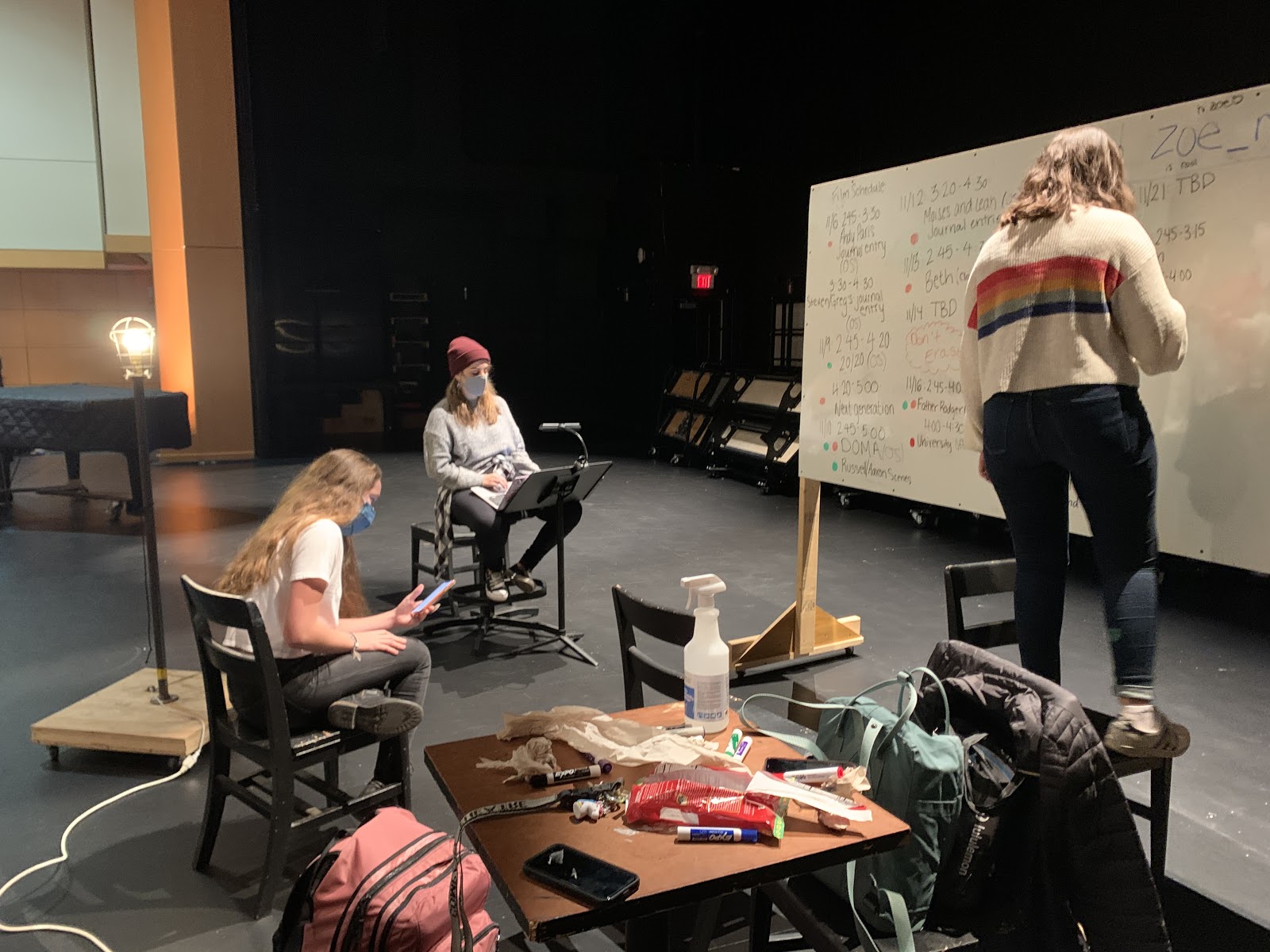Though the hybrid model at the high school aims to make life in school as normal as possible while still adhering to COVID-19 safety protocols, any restrictions put in place greatly affect how the Performing Arts department runs classes and conducts plays and concerts.
Navigating through an altered curriculum that maintains social distancing and mask-wearing customs while also making an effort to include both in-person and online students challenges is very challenging for teachers. These safety protocols impose drastic changes heavily upon the Performing Arts department classes that require intimacy, close contact and projection of voices.
One challenge the choral department significantly struggles with is the difficulty in projecting voices and hearing others sing while wearing a mask. According to the safety guidelines set forth by the Department of Elementary and Secondary Education (DESE) and the Governor’s office, students must sing outside, ten feet apart, masked, and facing one direction.
Due to the differences in speed of internet services, lag presents another challenge on Zoom by preventing singers from singing or playing simultaneously and in time with one another. Zoom also allows only one microphone to be picked up at a time, so class cannot address vertical harmony and tuning. Students on Zoom, as a result, must sing on mute.
“This is very strange to say the least because this means the teacher never actually hears the singers sing,” said Dr. Kevin McDonald, choral director.
Ms. Kara Sullivan, the theatre director, worked for much of the summer educating herself on techniques to make theatre feel “real” for students online. One way she did this was by taking a week of online classes with Broadway professionals with a grant she earned from the Parent Teacher Student Organization (PTSO). She finds that there are pros and cons to taking theatre class online.
“There is an intimacy in theatre that is difficult to create online and it provides for a lot of obstacles. However, for those students who may feel more shy in person, Zoom can help provide a safer place for those students,” said Sullivan.
The hybrid model forced the Performing Arts department to alter the curriculum and organization of classes . For chorus, online and in-person students start together, listening to and sharing music, taking care of general business and announcements, and addressing the instruction of music fundamentals using the projector screen, screen sharing with both cohorts. Half way through the class, the remote cohort group receives a written music assignment, and the in-person cohort goes outside to set up and get ready to sing.
“Individual instruction is a bit easier because you can provide accompaniment tracks for students to use at home; you can have one singer perform from home using the accompaniment track and the teacher can listen and respond to what they hear and instruct specific topics on their vocal performance,” said McDonald.
Sullivan transferred her curriculum into focusing more on script analysis and playmaking as opposed to performance work.
“I like to think of turning these challenges [of the restriction on the curriculum] into opportunities… It is a great way to read plays of different voices, create work of our own and branch out,” said Sullivan.
In terms of live performances, choral concerts and the fall play will not happen in-person. However, there will be a documentary filmed and streamed for the fall play, The Laramie Project Ten Years Later, in December. Auditions were held online, and online rehearsals happen three times a week. The choral department is focusing on virtual concerts using technology that will be shared out in the community through Youtube and social media.
“The wonderful community of the arts department is still very present even if it is over Zoom or six feet apart outside,” said Lucy Calcio ’22.

